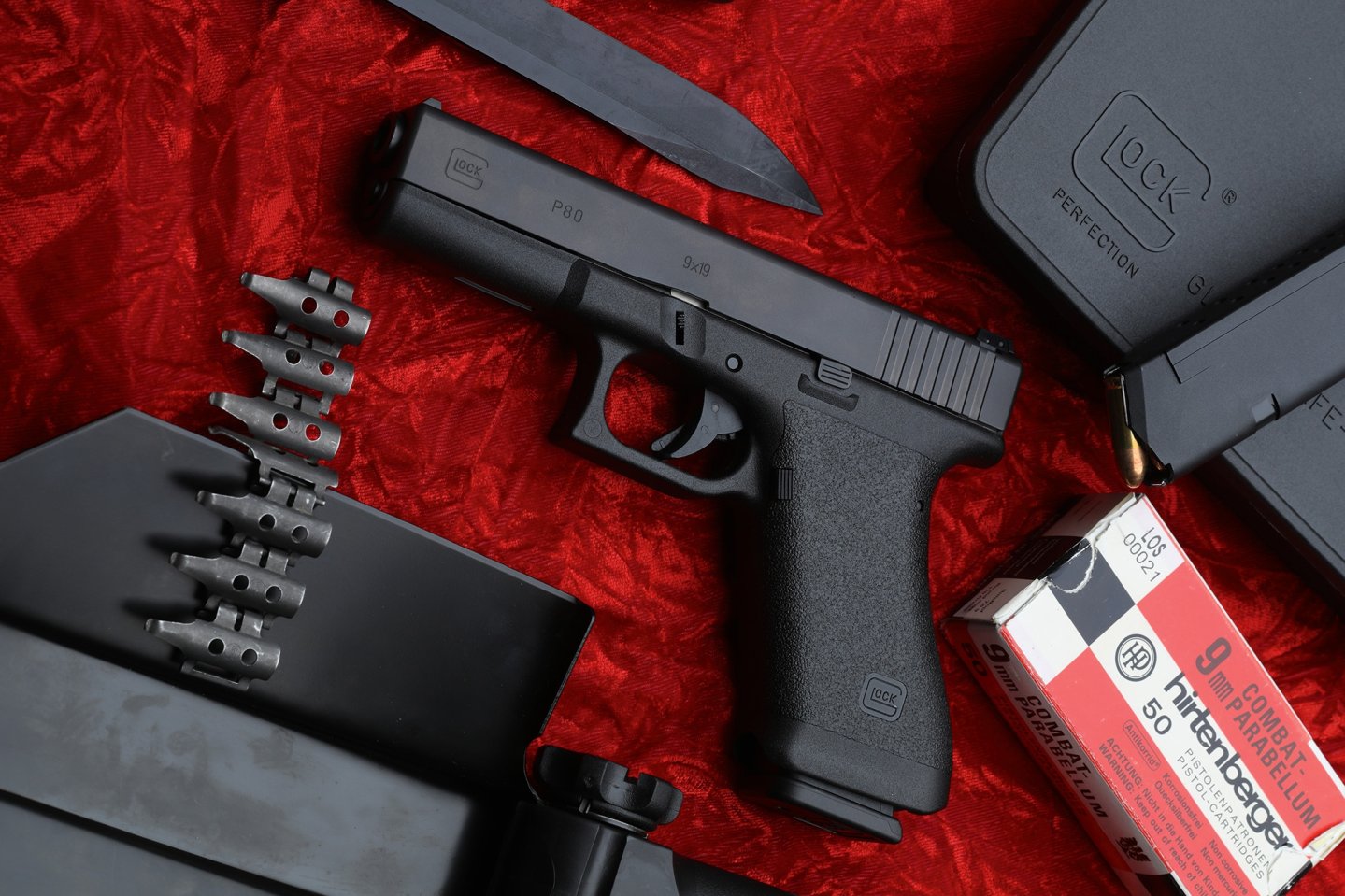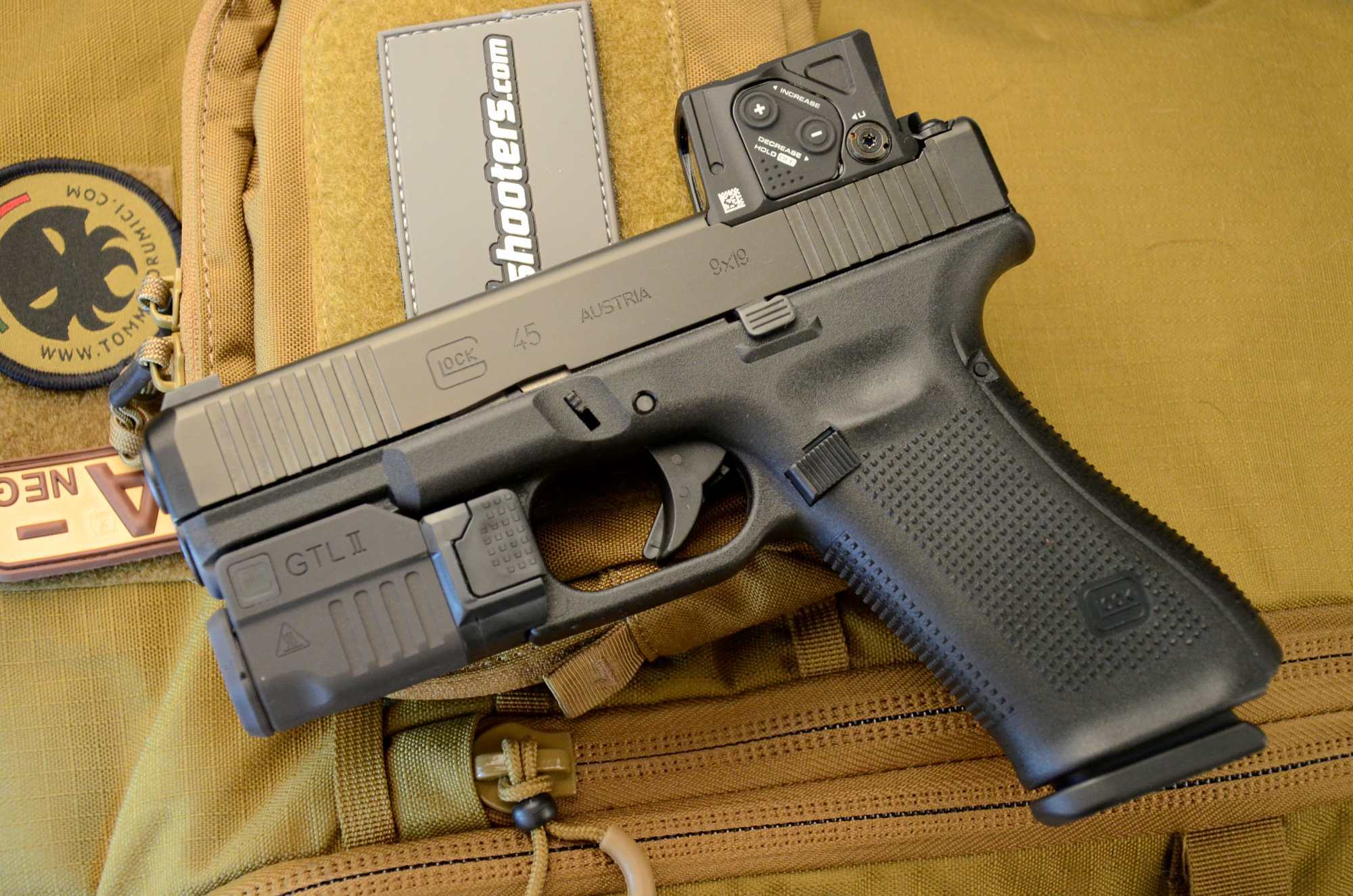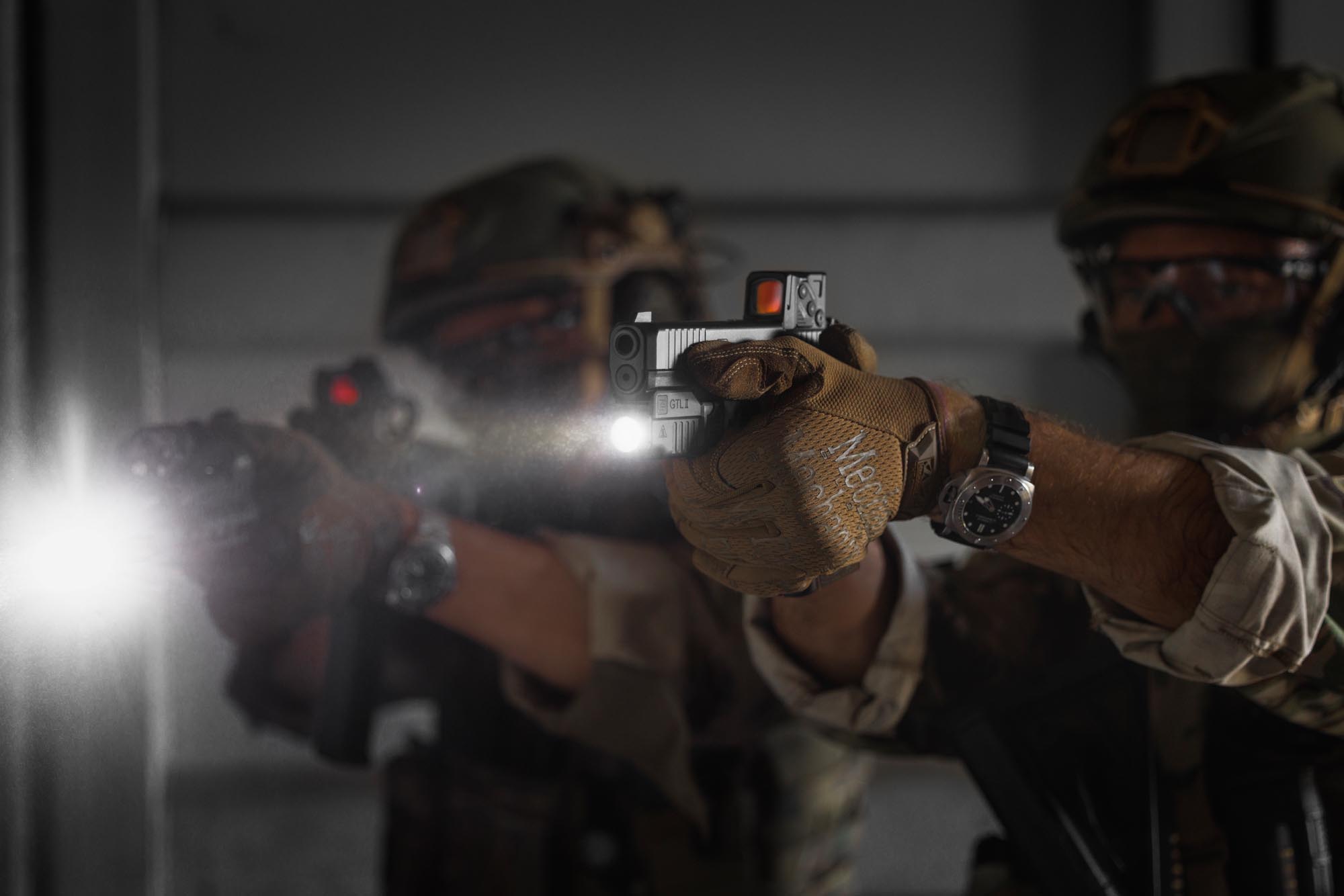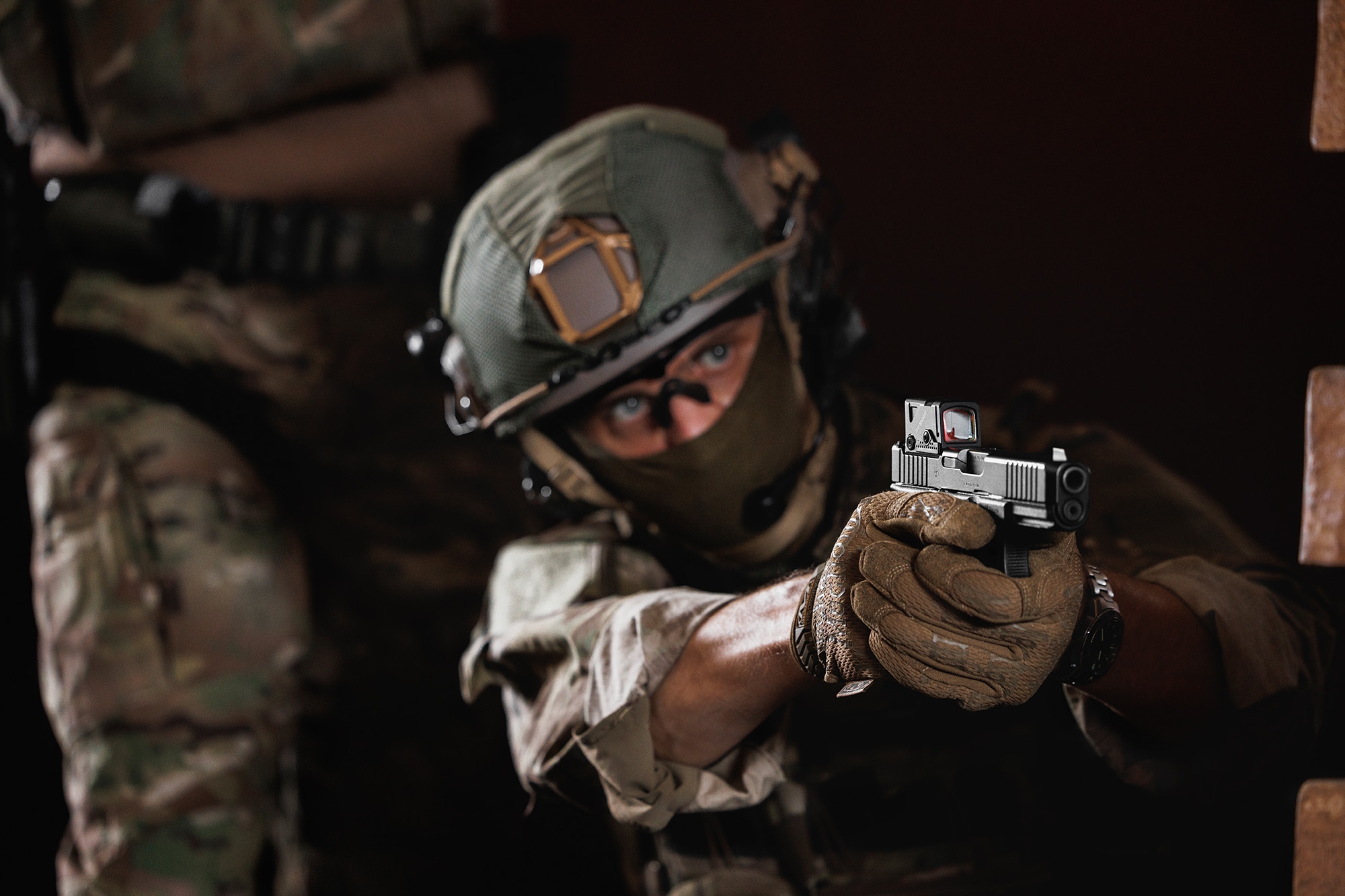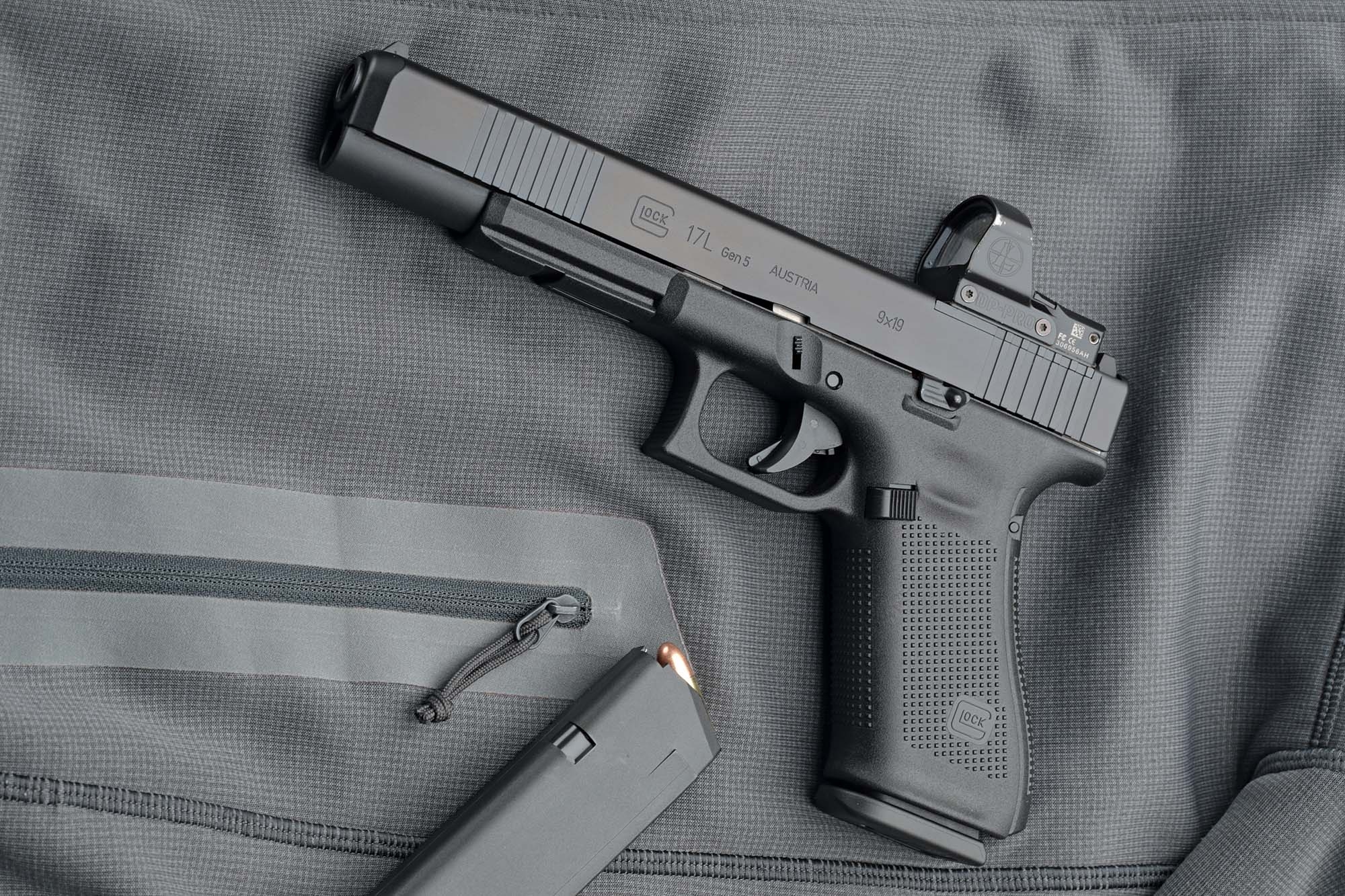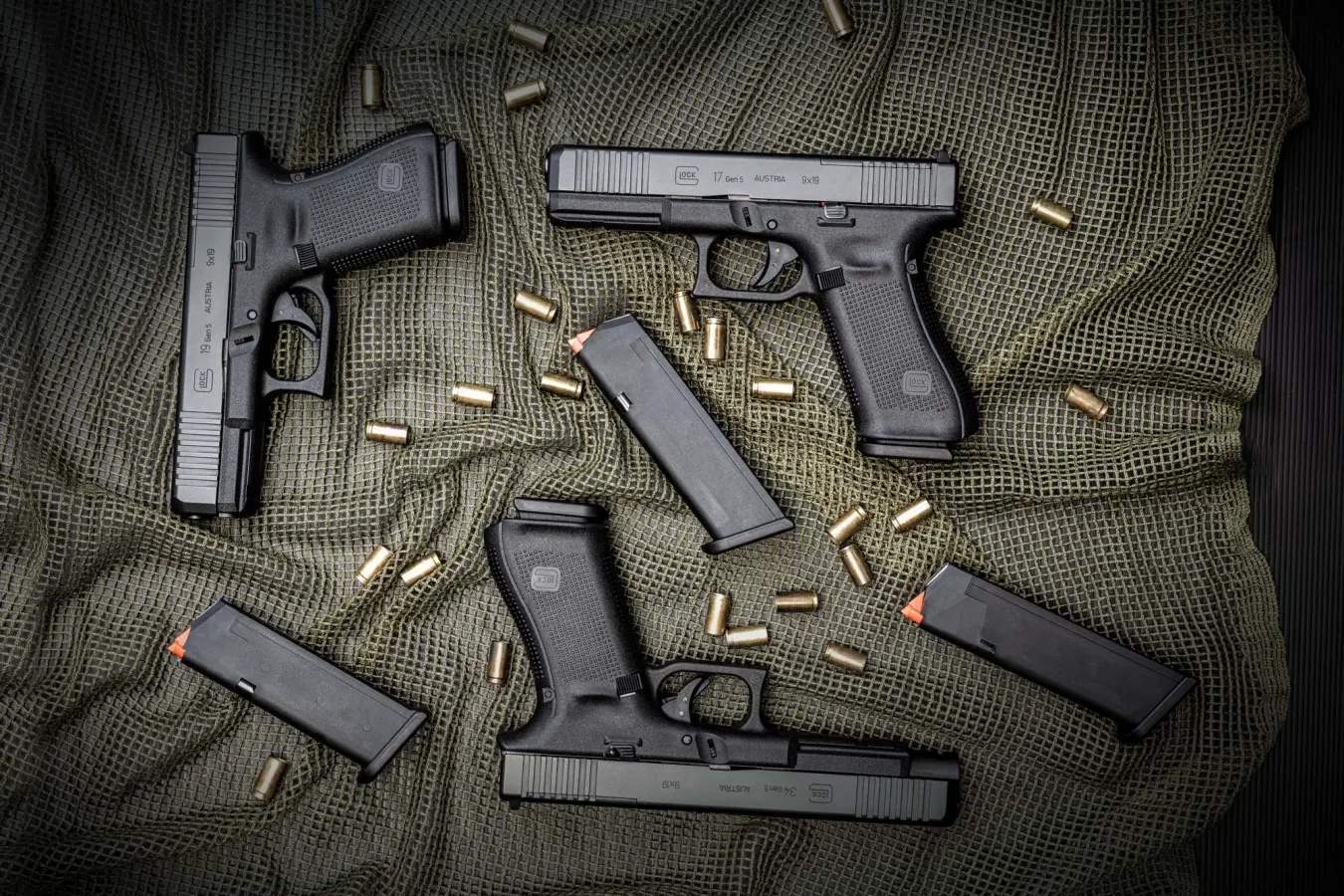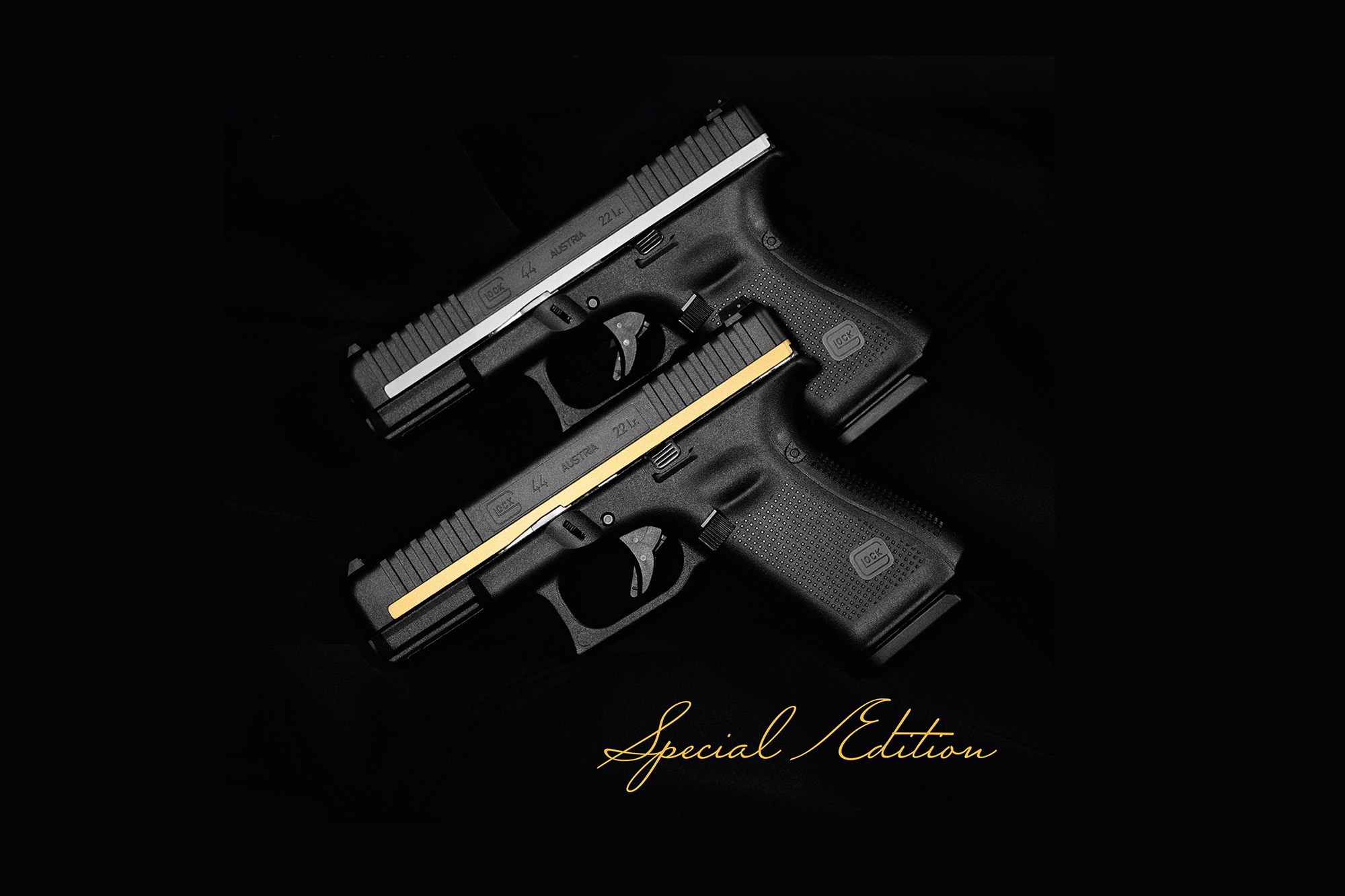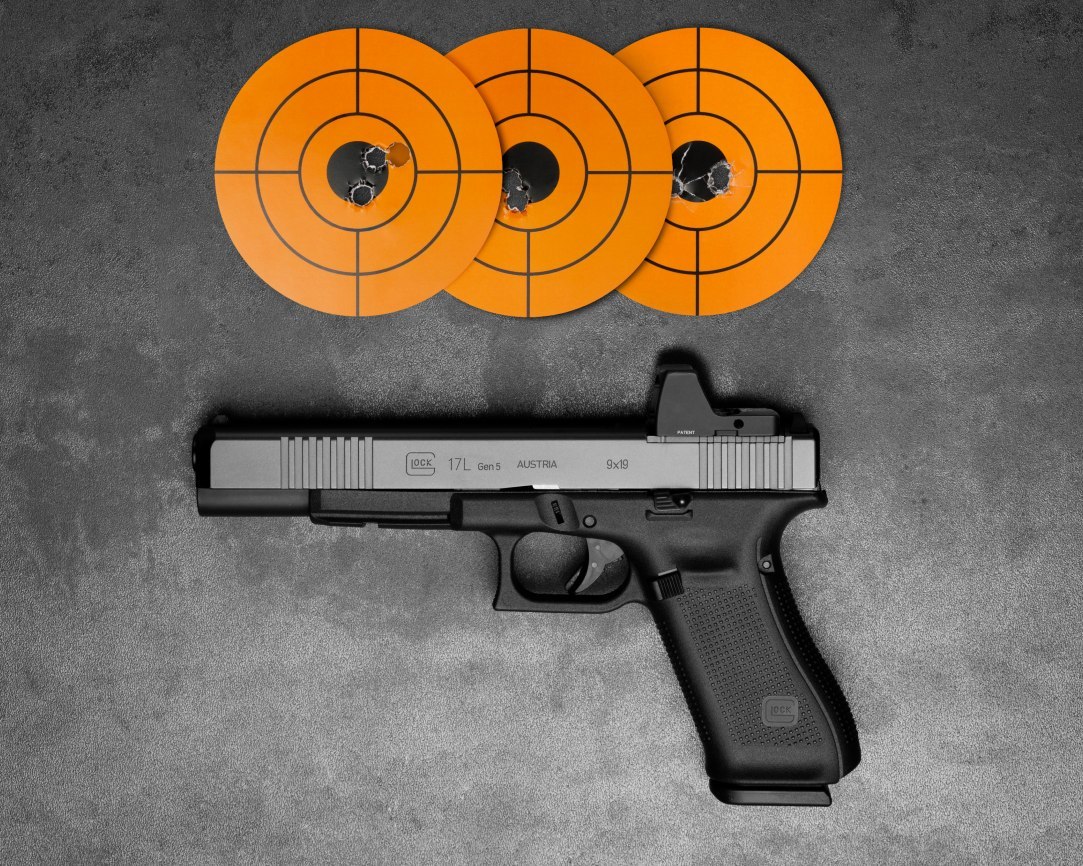1982 – what a year! In the U.S., E.T. - The Extra-Terrestrial flickered across the screen and Michael Jackson's newly released Thriller was to become the world's best-selling album, the FIFA Wolrd Cup is played in Spain and the first compact discs (CDs) are produced. Things were much more unspectacular in Austria. Here, the P80, a 9mm service pistol with a newfangled plastic frame, was introduced. At the time, only very few would have believed that this pistol would be a commercial success, let alone predicted that it would one day have a significant impact on modern pistol manufacturing.
But the story of the classic Glock P80 pistol begins two years earlier
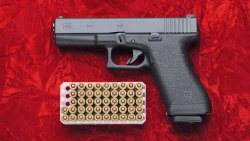
At the beginning of the 1980s, the Austrian Ministry of Defense sought to modernize the Austrian Armed Forces by issuing a call for tenders for a new service pistol, which was to go by the name of Pistole 80 – or P80 for short. The requirements for the new handgun were primarily characterized by low weight, high reliability and ease of use. Gaston Glock, who had previously gained experience in the processing of plastics technology, including field knives, recognized his opportunity here. In 1980, he founded the Glock company for this purpose, based in Deutsch-Wagram, not far from the gates of Vienna. In addition to his long-time confidant Reinhold Hirschheiter, he also brought a small group of capable design engineers into the team, who took a close look at the pistols already on the market and their patents. The previous designs and manufacturing methods were to give way to new techniques. The project was worked on intensively for two years in order to meet the deadline.
The new polymer pistol from Glock has design features that are still considered the benchmark in modern pistol design:
- Inexpensive to produce, lightweight polymer grip
- High magazine capacity (initially 16+1, today 17+1 cartridges)
- Simple, low-cost Browning-Petter-SIG locking system (cartridge chamber block locks in ejection port)
- Consistent trigger pull weight from first to last shot, requiring less training than DA/SA trigger systems
- Partially pre-cocked "Safe Action" trigger with safety integrated in the trigger blade as well as internal, automatic drop and striker safety, otherwise no external, manually operated safety. Incidentally, the partially pre-cocked trigger system had already seen the light of day some seven decades earlier in the Roth/Krnka M7
- Low barrel bore axis with minimal muzzle flip, especially when shooting one-handed.
- Minimization of individual parts. Each additional component increases the risk of failure and also causes costs in production, quality management and warehousing. In this respect, the design of the gun with only 32 components at the time was a forward-looking idea.
The starting signal for the Glock P80 in 9 mm Luger - the story of the first Glock polymer pistol
The starting signal for the world career was given completely unspectacularly in March 1982, when the first test samples with the sober names B1 to B5 were presented to the Austrian Army. After the extensive testing phase, the Glock pistol then emerged as the winner on October 29, 1982. 25,000 pistols were delivered to the Austrian Army between 1982 and 1984. Together with the Steyr Sturmgewehr 77 bullpup rifle – also known as AUG (Army Universal Rifle) – and the Steyr SSG 69 as a sniper weapon, Austria was probably the most modern army in the world in the field of small arms at that time. Shortly afterwards, the armies of Norway and the Netherlands also switched to this new type of pistol. Since November 1986, Glock was also represented in the USA with a branch office in Smyrna, Georgia. The P80 became the Glock G17 on the civilian market. There are different statements about the naming. Glock itself states in its newsletter on the P80 that the magazine capacity of 17 cartridges gave it its name. Josef Mötz and Joshi Schuy in their book Die Weiterentwicklung der Selbstladepistole I (The further development of the self-loading pistol I) claim that it was the 17th set of drawings for the pistol that led to the model name. If you would like to know more about the history of the Glock and some other pistols with an Austrian connection, you can only be advised to read this specialist literature.
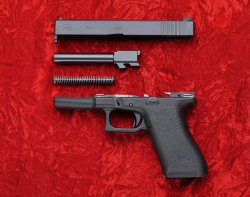
As nice as the success story of the Glock pistol reads in retrospect, it was far from smooth. There were prejudices about the durability of polymer that had to be dispelled. Time and again, there were rumors that the gun was not clearly recognizable at airport controls, which was supported in Hollywood, intentionally or unintentionally, by the movie Die Hard with Bruce Willis, and further increased media interest. In addition, as a newcomer from Europe, the company had to assert itself in the patriotically minded USA against long-established companies such as Colt, Ruger and Smith & Wesson. But perseverance paid off. The small Colby Police Department was the first U.S. police department to introduce the Glock G17 in 1986. This was followed by the Howard County Police Department in Maryland and the Miami Police Department in sunny Florida. Many other government institutions and police departments were to follow, and Glock had a decisive influence on the then emerging concept of high-firepower 9mm "Wondernines". In 2013, Glock published that about 65% of all police departments in the U.S. relied on one of their numerous models. Whether one likes the Austrian bestseller or not, one thing must be conceded to it without envy: it has changed modern pistol design with lasting effects. And last but not least, the tuning market with its sensible but also senseless accessories is bigger for the perennial favorite from Austria than for any other polymer pistol, which once again underpins its market success.
What perhaps also accounts for the triumph of the Glock is the principle of "never change a winning system". While other manufacturers keep coming up with new models that have to prove themselves over the long term, Glock has largely stuck to its original design and has only made minor modifications over the decades. This primarily concerns the ergonomics, which forms the preliminary branch tip of the family tree with the Gen5 released in 2017. We have recorded a short overview of the changes from the first to the last generation in words and pictures.
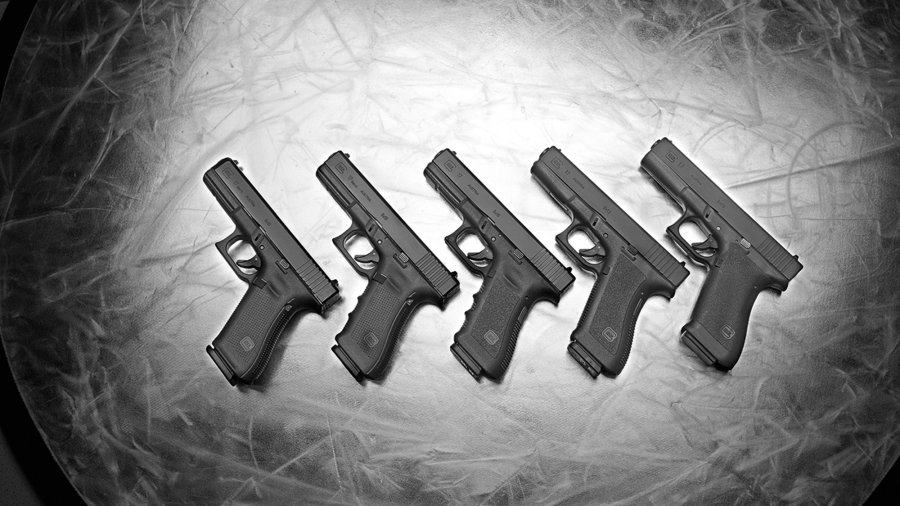
How much original Glock is in the new P80?
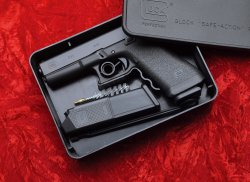
First of all, the P80 is limited, not to a certain number, but to the production period of this year (2022). Anyone hoping to acquire a Glock of the very first hour with the P80 will be somewhat disappointed. Externally, the pistol with the idiosyncratic grip structure and missing rail for light-laser modules actually looks very much like the original Glock. Until about 1985, slides were matte galvanized, but this did not prove to be particularly abrasion-resistant. For this reason, the P80s that had also already been delivered to the German Army were given a makeover and given the Tenifer coating that was common until Gen4. In addition, the first barrels were one millimeter smaller in diameter and the spring guide rod was not yet captured. Starting around 1986, the serial number is located in a small metal plate on the underside of the dust cover. At this point, at the latest, the manufacturer must make concessions to originality if he wants to sell the gun internationally. Interestingly, our test gun was fitted with an adjustable sight, as it only appeared in 1986 with the distribution in the USA. A look inside then reveals 3rd generation technology, which can also be seen in the one-piece spring guide rod. Thus, our P80 is not 100% the army pistol introduced at that time, but can keep quite close to the original in line with modern production. Older Glock shooters in particular will still remember the resealable plastic box, which is inevitably reminiscent of Tupperware. Of course, Glock has also resurrected this for the P80. All in all, a nostalgic trip back to the 1980s!
Glock P80 Limited Edition specs and price
| Manufacturer: | GLOCK |
| Model: | P80 |
| Caliber: | 9 mm Luger |
| Magazine Capacity: | 17 rounds |
| Frame: | Polymer with steel inserts |
| Barrel Length, Profile: | 114 mm polygonal rifling |
| Barrel Twist Rate: | 250 mm, RH |
| Rear Sight: | 4.3 mm wide, drift adjustable, white outlined |
| Front Sight: | 3.7 mm wide, with white dot |
| Sight Radius: | 170 mm |
| Safeties: | 3 (automatic) |
| Action, Trigger Pull Weight: | Safe Action, partially precocked / average: 2,440 g* |
| Weight (incl. Magazine): | 702 g |
| Extras: | Plastic case, certificate, spare magazine, cleaning kit |
| Price: | 1,150 euro |
| * Mean of 10 measurements with the Trigger Scan System | |
Wrapping-up: 9mm Glock P80
The limited edition P80 presents more than just the success story of a pistol: it has secured a place in the history of handguns as a milestone. Special models also always have their special price, so Glock enthusiasts have to put 1,150 euros on the table (price may be different in your country). Finally, we would like to thank Josef Mötz for providing us with some pictures.
Text: Tino Schmidt/Stefan Perey


